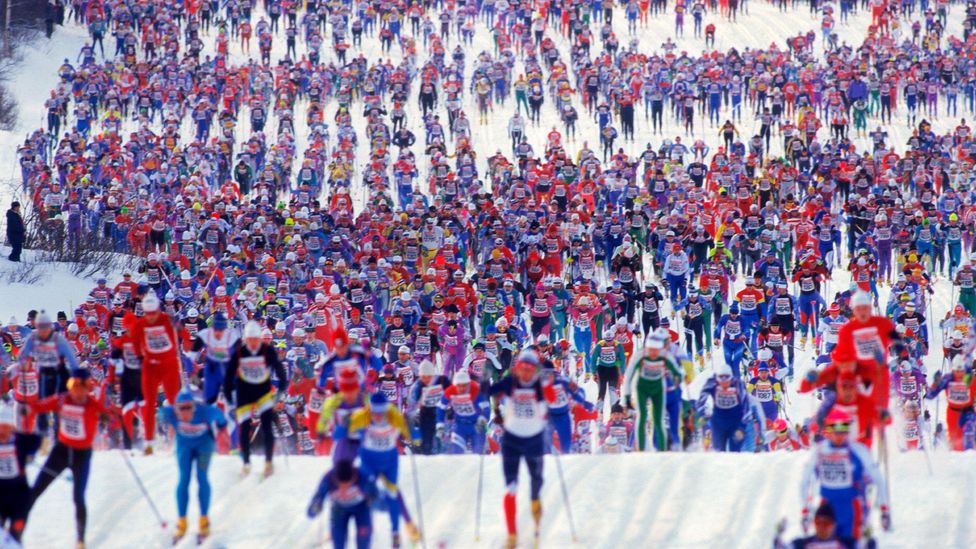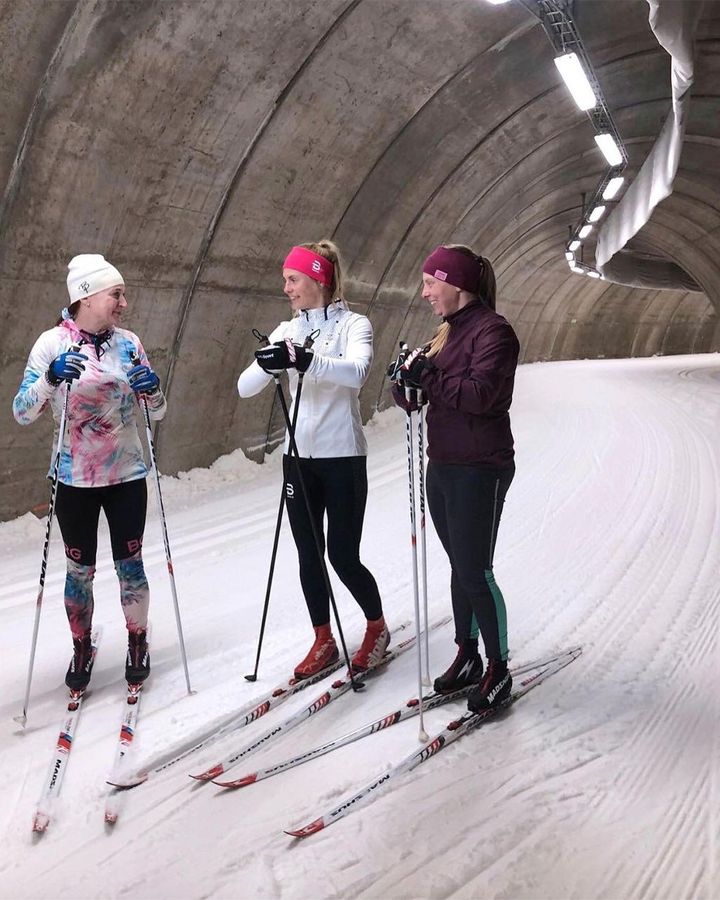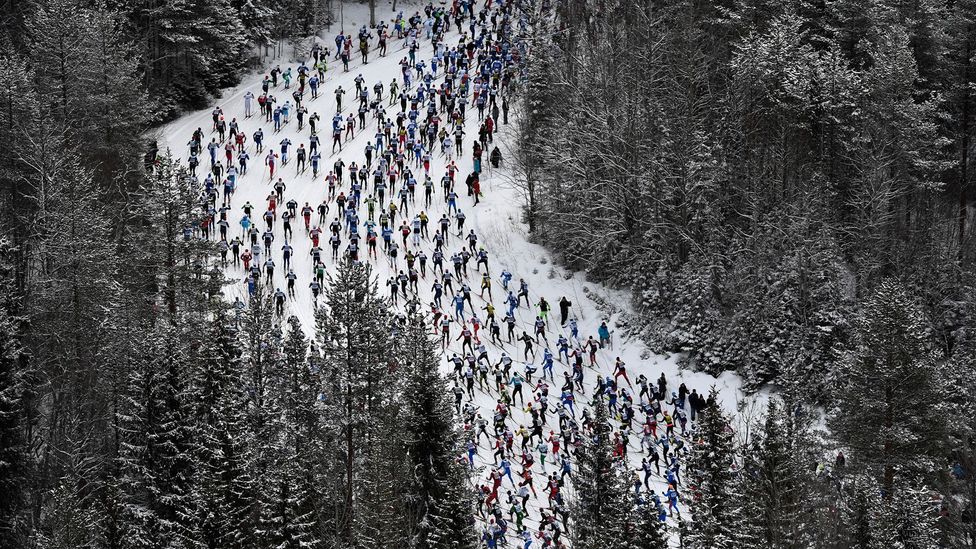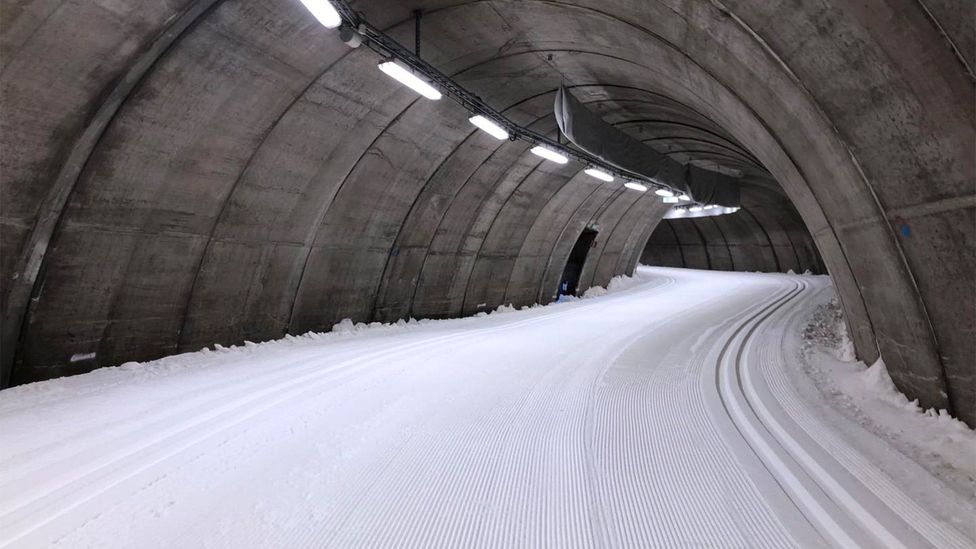On a blustery December morning, I made my way through the small Swedish town of Torsby near the Norwegian border. I had arrived well past midnight that same morning into a shadowy -13C winter wonderland. Now, snow crystals crunched under my feet as I ventured outside. I didn't so much walk as pulsa, the Swedish word for laboriously plodding through snow.
Considering my destination, the weather was rather ironic. I was on my way to the Torsby Ski Tunnel: arguably the largest man-made monument to Sweden's ongoing battle against the effects of global warming.
As a Swede, I love skiing – and I'm not the only one. Some people may know us as the home of fika breaks and ABBA, but we are also skiing pioneers. In fact, Scandinavia's Indigenous Sami people are widely believed to have invented skiing. The museum in the town where I was born, Umeå, displays a pair of 5,200-year-old skis that are among the oldest ever found. I had cross-country ski lessons at school and braved both downhill slopes and backcountry outings on family trips high in the mountains.
Each year, millions of Swedes gather around our TVs to watch the world's biggest and oldest annual cross-country skiing competition, the 90km Vasaloppet, whose 100th race takes place on 3 March 2024. In all, this year's event will feature some 50,000 participants. Much like a marathon, it attracts everyone from long-distance elite competitors to recreational skiers.

The 100th race of Sweden's famed Vasaloppet cross-country ski race takes place this year (Credit: Chad Ehlers/Alamy)
But over the years, we have noticed a big problem: as temperatures across the country are rising more than twice as fast as the global average, there is less and less snow. So, people in Torsby decided to do something about it. As an official Vasaloppet training centre, as well as a partner of the Swedish cross-country team, the town offers training facilities for elite and recreational skiers alike. That's because inside Torsby's 1.3km-long concrete tunnel, you can cross-country ski eight months a year.
When the tunnel opened in June 2006, it was the culmination of years of work for Per-Åke Yttergård, the former head of the Swedish Ski Federation's department for Nordic skiing. As we sat in the complex's cafeteria, Yttergård told me he first heard of ski tunnels when one was being built in Finland in the 1990s. Initially, he was sceptical, but only until he saw it for himself. "I was picked up at the airport and we went straight to the tunnel," he remembered. "'Damn!' I thought. 'What a fool I am. It's real snow. Real skiing.'"
Keen to future-proof the training possibilities for the local high school ski students – as well as to provide jobs for local residents and put Torsby on the map – Yttergård pushed for a tunnel to be built back home. Swedes swim inside and play hockey and handball inside, he thought. So why can't they ski inside?
The tunnel, which was made with concrete arches and follows the natural slope of the hillside, is Sweden's first. It was also the world's longest when it was inaugurated. Its construction required some inventing. "I am a bit bald," Yttergård joked. "I spent a lot of time scratching my head!"

The tunnel is built with concrete arches and is lined with underground pipes covered in permafrost (Credit: Torsby Skidtunnel & Sportcenter)
Its cooling system relies mainly on underground pipes directly below the floor, covered in a layer of permafrost, explained location manager Therez Söderberg. On top of that sits a thin layer of artificial snow. It is brought in from a pile created outside in January or February, just before the tunnel closes for the season, and has to last from the start of the next season in early June until its end seven or eight months later.
Visitors range from local students to World Cup cross-country teams from the US. Some locals, though, still prefer skiing outdoors. "To some degree that is still there," Söderberg said. "[The idea that] skiing, that's something you do outside."
Soon it was time for me to experience the tunnel for myself. Equipped with skis and poles, I pushed open the door and entered a bright indoor hall the size of a basketball court, its floor covered in snow. Punched through the wall at the far end were the two tunnel mouths. The tunnel has two parallel 1.3km tracks and can be skied in either direction, making for a 2.6km total distance. The loop begins and ends in the hall where I was standing. In here, the temperature is always -4C. There is no wind and no ice. The skiing conditions are, technically, perfect.
After resident trainer Rasmus Blom gave me feedback on my middling technique, I decided to venture out into the loop alone. The 8m-wide-by-4m-high concrete crescent was silent and ghostly around me. Except for my own ragged breath and the points of my ski poles hitting the snow and my skis gliding over it, I could hear only the fan system in the roof. Occasionally, the sounds of another skier betrayed their approach from around a bend. Light flooded down from strip lighting in the ceiling, interrupted by signs for emergency exits. But soon, all that faded away. As I continued around the loop, falling into the familiar chain of movements required to propel myself forward on the skis, I caught myself smiling.

A large, open room leads into the tunnelled loop (Credit: Matilda Welin)
According to the Swedish Meteorological and Hydrological Institute, there were 16 fewer days of snow cover in Sweden from 1991-2020 compared to 1961-1991. At Vasaloppet, the lack of snow is an annual discussion topic, with the media occasionally publishing pictures from a muddy stadium or, once, headlines proclaiming that beginner skiers were advised to "take off their skis and walk down the slopes" because of the snowless, icy ground. In the village of Norberg, home to another ski race, entrepreneurs are marketing their town as "snow-safe" by saving piles of snow across the summer under layers of sawdust.
The issue doesn't only affect hobbyists, but livelihoods, too. Popular Swedish skiing resorts like Åre and Sälen have devised plans to use water from local lakes, dig out wetlands and create dams to make fake snow for the pistes – sometimes battling environmental groups.
Since the opening of Torsby's ski tunnel, there are now a handful of others across Sweden, with plans for even more – and Yttergård and his colleagues have been consulted in the construction of at least one of them, located inside a mountain. According to Söderberg, the newfound competition isn't a problem for Torsby. As she puts it, the more access people have to cross-country skiing, the more interest they take in it. The same goes for good winters – they get people into the habit of skiing.
"[After a good winter,] people have bought equipment, they are eager," she said. "They think: 'I skied last year, now I want to race the Vasaloppet next year.'" And then they need a place to practice.

The tunnel has become a popular place for people to train for the Vasaloppet (Credit: Xinhua/Alamy)
The effects of climate change on cross-country skiing is causing concern both in Swedish and international circles, Per-Åke Yttergård admitted, but thanks to manufactured snow, important venues can be safeguarded. "We have worked quite intensively on the part of the [Swedish Ski Federation] to... develop the use of artificial snow." he said. "Actually, artificial snow [which is often made with bacteria] is not the right expression. ... It's water and air mixed under high pressure – exactly the same [as with natural snow]. Although the crystals are slightly coarser. When snow falls slowly from high above, the crystals splay out."
I left the tunnel and walked back down to Torsby, popping into a local cafe before my train back to Stockholm departed. The main street was heavy with snow and Christmas lights. It was beautiful, and nothing like the grey walls of the tunnel. I thought of the people Söderberg had mentioned, who believe skiing is something you should only do outside. I had always considered myself one of them. Then, I remembered the smile plastered across my face as I rushed across the perfect snow of the tunnel. Maybe it was time to reassess my stance.
---
Join more than three million BBC Travel fans by liking us on Facebook, or follow us on Twitter and Instagram.
If you liked this story, sign up for the weekly bbc.com features newsletter called "The Essential List". A handpicked selection of stories from BBC Future, Culture, Worklife and Travel, delivered to your inbox every Friday.
